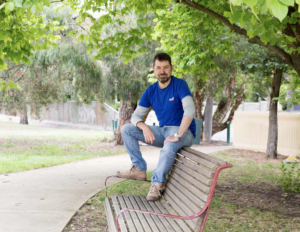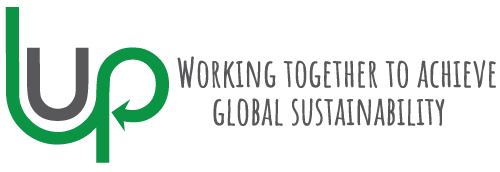We recently had the chance to work with Branding Consultant Lee Whitfield. Lee has worked in the USA, Europe and Asia but now lives in Melbourne, Australia. While he has worked for some of the world’s largest corporations, Lee focuses on social enterprises and how organisations are able to better market & ‘brand’ themselves for greater social impact. We were fortunate to sit down with Lee today for this guest interview, and wanted to share some of his insights for how your organisation can build a more socially responsible & conscious brand.

LUP: Thank-you for sitting down with us today Lee.
LEE: My pleasure. Thank you for having me over to do this interview. Following the Covid rules of course! I’m always happy to share my experience and knowledge with anyone looking to make a positive impact. Also, I would like to say, that I really like what you are doing at LUP Global. I think it is a signpost to the future and something every company should be embracing.
LUP: Thank-you Lee, you are most kind!
Please tell us more about why it is important for companies today to not only focus on social outcomes but to have ‘brands’ that can clearly embody this?
LEE: I work with lots of businesses that really struggle to find points of difference from their competitors. While I can create some lovely Brand Communication for them, this on its own isn’t really enough to make them preferential or stand out. To ensure their products get chosen over the competition, it’s important to go deeper and an add more substance to what they are doing, such as adding social & environmental outcomes. Aligning a company with a not for profit organisation, an ethical cause or simply switching to more sustainable materials/ingredients provides a really compelling reason to pick one Brand over another.
Everyone likes to buy things from “the good guys” (Not the company!) We want to feel we are spending our money, not just on a good product, but also that we are supporting a good person or company. That’s how companies with positive social & environmental outcomes really win out, especially when there is lots of competition.
So there really are a lot of benefits but what is important is that customers believe a company is genuinely committed to the cause.
LUP: You mentioned whilst reviewing the branding for LUP, that being “genuinely committed” is important and unfortunately greenwashing can be common, in particular for large corporates for example, in order to just get a social ‘tick of approval’. Can you please clarify what you mean by ‘Greenwashing’?
LEE: Yes, this is super important. Customers need to be confident that it’s not just a marketing gimmick. Simply claiming to be “green” or as we call it “greenwashing” is a very common practice now. There are lots of companies claiming to support positive social & environmental outcomes but in truth are doing the complete opposite. So making sure that those outcomes are genuine and authentic really matters.
The trick is putting these activities front and centre of the Brand. Sharing these activities on social media, at point of sale, on websites and anywhere the Brand meets customers. Also to do it in quantifiable and tangible ways that are demonstrable and measurable. Shifting Brand communication activities away from special offers and competitions, that often are simply Brand awareness activities anyway, to positive social and environmental outcomes is what is needed. That is also better for the perceived value of the Brand too.
LUP: If you had 3 main take-aways for an organisation looking at how to better market or brand themselves in order to make the greatest social impact, what would they be?
LEE: 1 -Be real, be genuine. Either; pick a social outcome that is close to the business owners’ heart, or align with the companies’ activities, or pick something employees deeply care about. Look for the negatives in what the company does. If it’s a carbon intensive company then plant trees. If it’s a coffee shop then think about where that coffee comes from and what you could do in that region for the local people or environment.
2- Pick something ALL the company can get involved with. Pick something that everyone will want to champion and be proud of. Really good social and environmental outcome projects can lift the spirits of all employees and make them feel good about coming to work each day. Just raising money and giving it away does not have the same impact. Lots of studies show that working in a soup kitchen for the homeless has much more value and leaves a longer lasting impression than simply writing cheques.
3- Take real tangible action that is demonstrable and measurable. Bank Australia has created a Wildlife Refuge in Victoria. It’s very real. You can go there and see it. They can talk about the wildlife that is retiring to the area in their Brand communication. They can show how biodiversity is returning, how the area is greening. While most companies can’t afford to do this they can apply the same ideas on a smaller scale. Pick projects that will give you ongoing content for social media and Brand communication.


